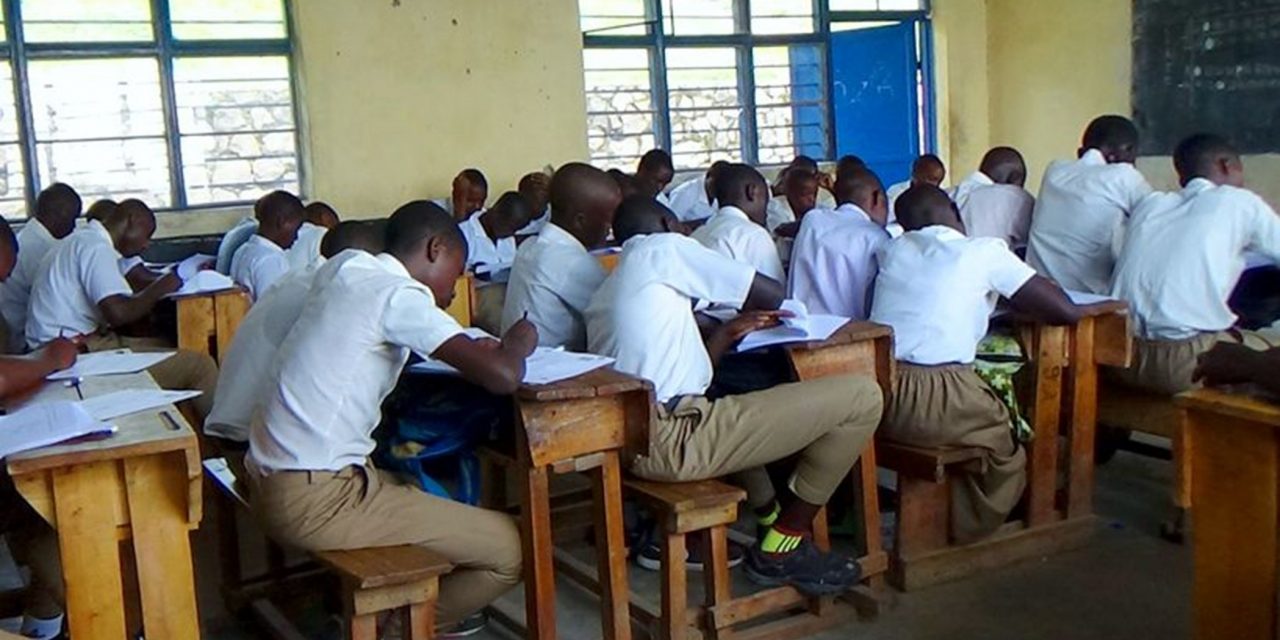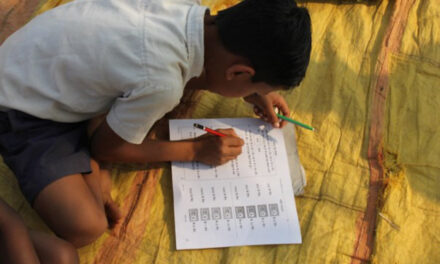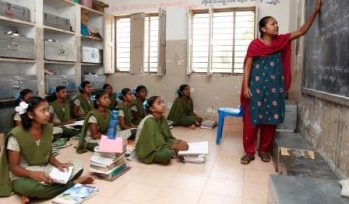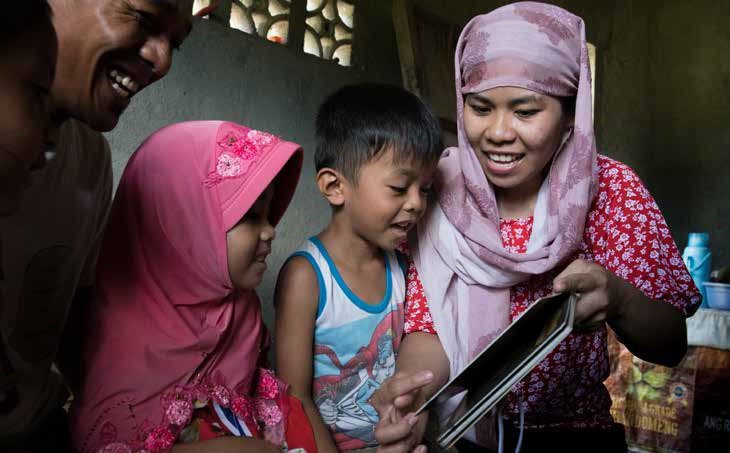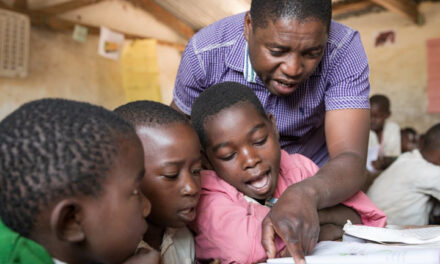This blog highlights lessons learned from using the World Bank’s Teach tool and video recordings to observe classroom activities in over 100 Rwandan secondary schools. It was written by Laterite and the Research for Equitable Access and Learning (REAL) Centre at the University of Cambridge. Laterite and the REAL Centre are learning partners on the Mastercard Foundation’s Leaders in Teaching initiative, responsible for generating evidence of improved teaching quality and student learning on a range of program activities in Rwanda. This blog has also been published on the Laterite website.
High-quality teaching is vital for improving student learning outcomes. In low- and lower-middle-income country contexts, understanding what happens in the classroom has been a ‘blind spot’ to date. Without effective classroom observations, it can be difficult to assess teaching quality. Teaching quality is especially important in secondary education, which plays a crucial role in preparing students for the workforce.
As part of ongoing work to generate evidence on what drives quality teaching for the Mastercard Foundation’s Leaders in Teaching initiative, the Research for Equitable Access and Learning (REAL) Centre at the University of Cambridge and Laterite used video recordings to capture classroom observations in mathematics classes in over 100 secondary schools in Rwanda. The aim was to find an empirical and scalable way to understand the impact of interventions to improve teaching quality.
The teams used an adapted version of the World Bank’s Teach tool to code and observe video recordings of teaching activities at the classroom level. The Teach tool enables researchers to reliably analyse teaching practices to understand what drives learning outcomes, and improve teacher training and assessment frameworks.
A new REAL Centre Policy and Research Paper details the lessons learnt from using the adapted tool.
Is the Teach classroom observations tool a useful instrument for gathering evidence on teaching quality?
We found that when applied correctly, the tool delivers consistent and reliable results. It also has many potential applications beyond the Leaders in Teaching initiative. For example, with the right feedback loops in place, evidence from the tool could inform teacher assessment frameworks and teacher training programs. Teachers could use the findings from the observations to make micro-adjustments to their teaching practices to the benefit of their students. The tool also presents opportunities to make clear links between teaching quality and student learning outcomes.
What challenges did we face in using the tool?
Training researchers to use the tool is time-consuming, but essential
For the tool to work, researchers must share the same interpretation of each aspect being observed in the classroom. For example, when observing ‘teacher clarity’ in the Teach tool, researchers are required to assess whether a teacher has explained the content clearly, not whether the content is accurate.
Intricacies such as these meant that it took a considerable amount of time to complete the training – especially considering we were using an adapted version of the instrument. In our case, it took significantly longer to train researchers than it did to code observations.
The training was however vital for ensuring the quality of the data. We found that well-trained researchers were able to independently produce consistent results reflecting a nuanced picture of teaching quality. This suggests that the use of Teach comes with an up-front time commitment that pays dividends at the analysis stage.
Researchers face trade-offs in using video for coding classroom observations
Using video recordings brings several advantages compared to in-person classroom observations. For example, video recordings remove the not insignificant burden of capturing everything on the spot. Video recordings mean that researchers have more time to code observations carefully and ensure essential aspects of teaching practice are not overlooked.
At the same time, certain aspects of classroom activity are difficult to capture on video. Background noise such as heavy rain sometimes made it difficult to hear the teacher on the video recording. Giving feedback to students during group work is an important part of the competence-based curriculum in Rwanda. However, this was sometimes difficult to code because the recording equipment did not pick up what the teacher was saying to students as they worked in small groups.
Further, given the position of the video camera, it was not always possible to identify whether students were boys or girls, or if they had a disability. This made it difficult to capture issues of equity in classroom teaching practices.
Finally, the cost of good quality recording equipment must also be factored in.
While there are ways to address many of these concerns – for example, by sketching the class layout in advance to identify which children are sitting where, or adding a second camera – it is important to recognize that video recordings may not be able to capture every possible aspect of what happens in the classroom.
Researchers should start with a clear understanding of which behaviours or activities are most important to capture using the classroom observation tool. With this information, they can decide in advance which aspects to focus on in the recording. In some cases, such as if group work is a key area of interest for the researcher, an in-person approach might be more appropriate.
Teacher and student privacy must come first
Using video to record classroom observations captures large amounts of identifiable data. Teachers who give consent to participate should be confident that the recordings will be kept secure and used only for the stated purpose. Researchers must clearly inform students and/or their parents/caregivers of this and seek informed consent. This will be particularly important in any approach to scale the use of the tool to more classrooms across the country.
Read the full policy brief for more reflections and insights on using the classroom observations tool in Rwandan secondary schools.
Laterite and the REAL Centre carried out this work in partnership with the Mastercard Foundation as part of the Leaders in Teaching initiative. Leaders in Teaching supports teachers throughout their careers and prepares them to deliver high-quality education through a variety of interventions. The initiative focuses on STEM subjects in secondary education in Rwanda. The REAL Centre and Laterite are learning partners for the Leaders in Teaching initiative. Together, they are responsible for generating evidence on how the initiative is influencing the quality of teaching. The Teach tool was adapted with the Leaders in Teaching program in mind.
The REAL Centre at the University of Cambridge pioneers research into overcoming barriers to education, such as poverty, gender, ethnicity, language and disability, and promotes education as an engine for inclusive growth and sustainable development.
Laterite is a data, research and advisory firm dedicated to bringing high-quality research services to the most underserved markets. Based in East Africa, the firm strives to carry out impactful research that helps decision-makers find solutions to complex development problems.

